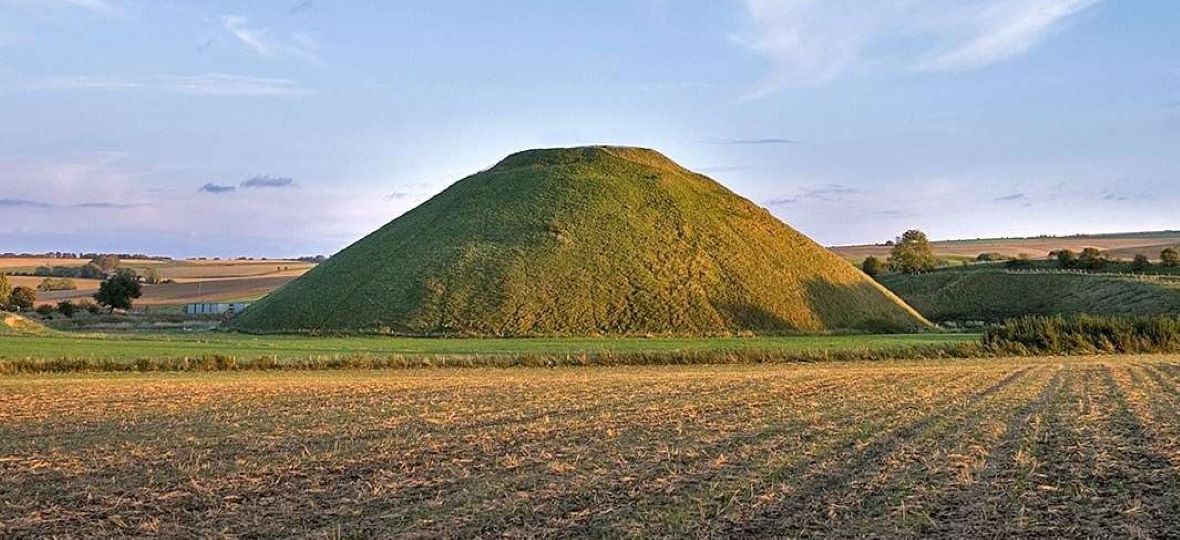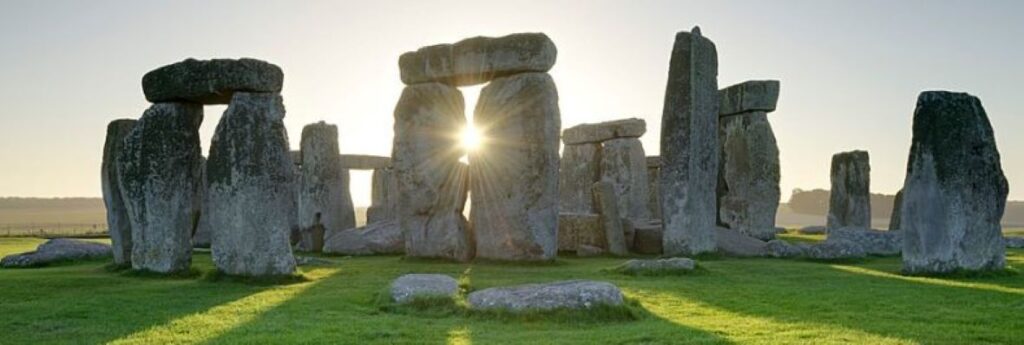Stonehenge is synonymous with celebrations for the summer solstice, the longest day of the year, as crowds usually flock to see the sun rise from behind the site’s famed Heel Stone. A day of great importance, particularly among the Druid and Pagan communities, for the first time ever the celebrations will be streamed digitally in 2020.
English Heritage, which looks after the Wiltshire site, will live stream the sunrise on its social media channels on Sunday, June 21, giving viewers around the world the chance to experience the incredible sight for themselves.
With a history stretching nearly five millennia, the ancient mystical site, together with a stone circle at nearby Avebury, forms part of the 2,630-hectare Stonehenge and Avebury UNESCO World Heritage Site. As well as being a wonder of the world and a masterpiece of engineering, the prehistoric monuments have great spiritual and cultural meaning.
But with limited evidence around how it got there, or why it was built, the vast stone complex has spurred a number of highly creative theories. From aliens and giants being involved in its construction, to its use as a burial site, a music venue, and even being the result of an ancient team-building exercise, its past is riddled with mystery. Join us as we take a step back in time and explore the history of one of Britain’s best-known landmarks.
Delving into history
What is known is that construction didn’t take place all at once. The first structure to be built at the site around 5,000 years ago was an early henge monument, a circular earthwork enclosure, with the stone circle added during the late Neolithic period – estimated to be around 2500 BC. This was undoubtedly a mammoth undertaking involving hundreds of people using only primitive tools.
The larger sarsen stones – one of two types of stone used for the monument – were arranged in two parallel formations to form a horseshoe and an outer circle. These stones weigh an average of 25 tons and scientists believe they originated in quarries around 20 miles to the north of the site. The smaller ‘bluestones’ were erected between the two sets of sarsens to create a double arc, and their roots have been traced back to the Preseli Hills in south-west Wales, some 200 miles from Stonehenge.
As with the origins of the monument itself, various theories exist as to how the stones came to be in the region. Some suggest that Neolithic builders used sledges and tree trunks to form rollers, or that they floated the stones on barges along the Welsh coast and up the nearby River Avon. Scientists have also championed the idea that the huge stones were moved by glaciers and vast ice floes during one of the Ice Ages. For those that dream of exploring Stonehenge, it’s possible to take a VIRTUAL TOUR.
Stonehenge and Paganism
Physician William Stukeley linked Stonehenge to Druids – followers of a Celtic spiritual tradition widely considered to be similar to modern Paganism – in the 18th century, with a theory that the site was built by them as a temple. While there is no evidence that Druids were alive at the time Stonehenge was built, the site remains a place of spiritual importance, partly due to how the stones align with the sun for both the summer and winter solstice.
The role of the sun
Based on archaeological evidence, it’s thought that the Heel Stone – an outlier to the north east of the main arrangement – may have had a partner stone to frame the sunrise in midsummer. From a central vantage point within the main stone circle, it’s possible to see the sun rise to the left of the remaining stone.
Numerous burial mounds and other archaeological findings from the surrounding area date back to the Bronze Age, while a major hillfort, a little over a mile from Stonehenge, can trace its roots to the Iron Age. Further archaeological excavations have found numerous Roman objects in the region too, suggesting that the site carried great ritual importance throughout their time in Britain too.
For budding astronomers keen to see more, English Heritage have also created SKYSCAPE – an immersive experience detailing the skies above the iconic stone circle..
Recreated Neolithic houses
Five recreated Neolithic houses, complete with replica artefacts similar to those recovered from excavations at the nearby Durrington Walls settlement, help to showcase what life was like for people in the region at the time of Stonehenge’s construction. Even while sat at home today, it’s easy to imagine how they lived just by looking at the circular huts, built using chalk and straw daub with thatched roofing.
Major sites in the surrounding area
The entire landscape around Stonehenge is rich in archaeology, with more than 350 ancient monuments and burial mounds discovered to date. Recovered items include everything from arrow heads and battle axes to antler picks and flint hammerstones, with each piece and every site playing a key part in understanding life in Neolithic and Bronze Age Britain. Highlights of the Stonehenge collection of artefacts can be viewed on the English Heritage website.
Stonehenge Avenue
Linking the River Avon with Stonehenge and measuring just under two miles across Salisbury Plain, Stonehenge Avenue forms what may have been a procession route to the stone circle. Formed of two equidistant banks, it was first discovered in the 18th century and runs north east from Stonehenge for around 550 metres before changing direction several times on its route to the river.
Avebury
Part of an extensive set of Neolithic and Bronze Age ceremonial sites – and forming part of the UNESCO World Heritage Site – Avebury is the location of Britain’s largest stone circle. Constructed during the Neolithic period, somewhere between 2850BC and 2200BC, the site includes a vast set of earthworks and a section of Avebury village. Around 100 stones formed the biggest stone circle, with two further rings found within it. Archaeologist Alexander Keiller excavated the site in the 1930s and a number of the key finds can be found within the museum at the site which bears his name. In recent times, archaeologists working at Avebury have uncovered evidence of an underground square megalith monument within the confines of the stone circle, although its exact purpose is yet to be determined.

Part of the Avebury World Heritage Site and forming the largest artificial mound in Europe, Silbury Hill compares in height and magnitude to the pyramids in Egypt! The Neolithic site, developed between 2470 BC and 2350 BC, has yielded no signs of ancient burial, so both its use and meaning remain a mystery. The numbers associated with it are staggering – measuring roughly 160 metres across and 30 metres high, evidence suggest that as many as four million hours and half a million tonnes of chalk and clay were needed to create it.
Woodhenge
Another site close to Stonehenge, Woodhenge dates back to around 2300 BC. Aerial photography played a vital role in determining that the site included a number of timber posts that formed six concentric circles, which may have originally bolstered a ring-shaped building at what was initially thought to be a Neolithic burial mound. Concrete markers now show where those poles were positioned, while archaeological evidence suggests the site remained in use until around 1800 BC. Later evidence of Iron Age and Roman settlement in the region means the site may also have had defensive importance.

